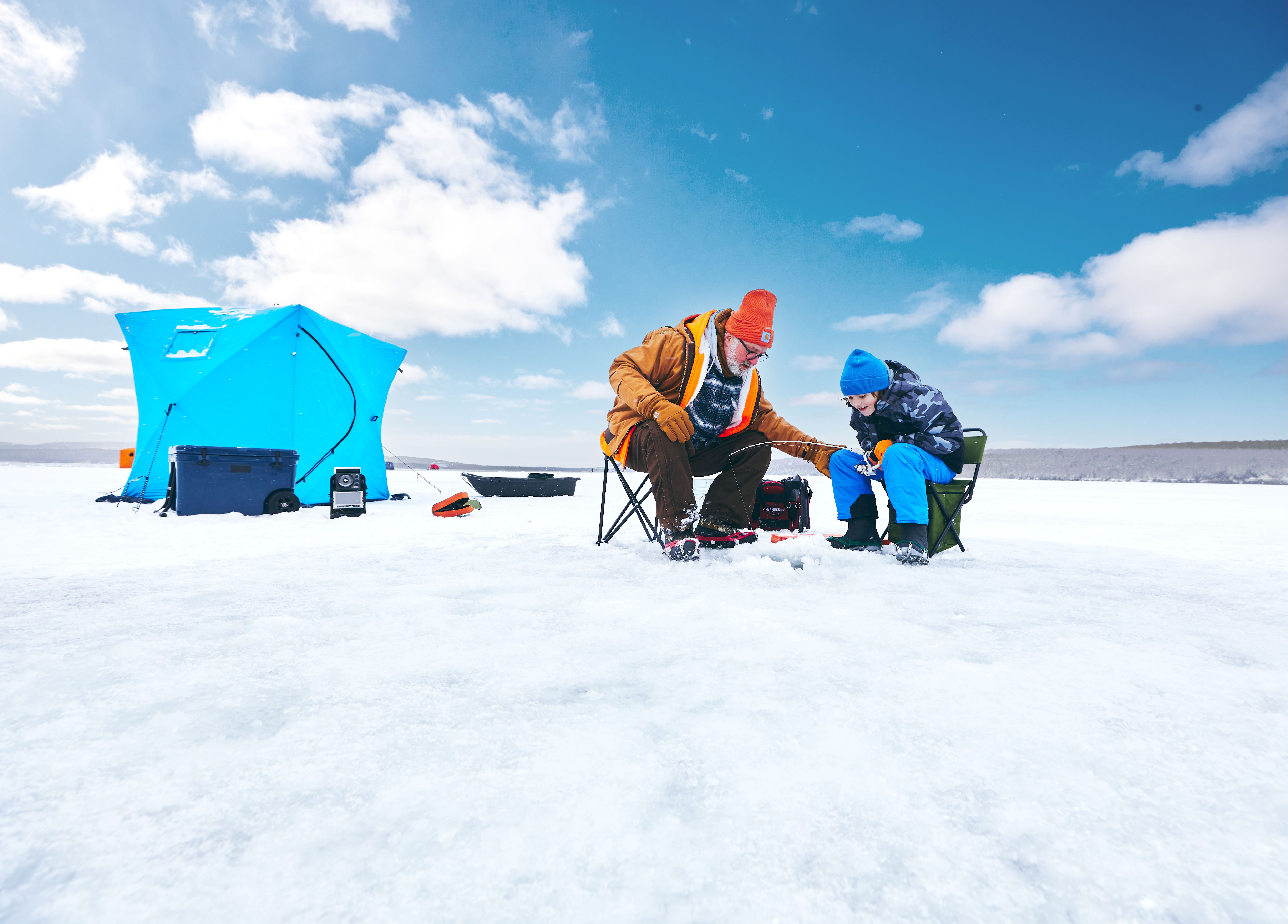Safety Series: Navigating Ice and Snow
When winter arrives, Michiganders are all about enjoying our natural wonders to the fullest. From our snow-covered forests to frozen lakes, it’s prime time to bundle up and pursue all your favorite outdoor activities – skiing, snowshoeing, snowmobiling, ice fishing, fat-tire biking, ice skating, winter birdwatching. But even the most playful days require preparation and constant vigilance to ensure you stay safe no matter what the conditions may be.

Safety begins from the moment you decide to hit up an outdoor winter attraction. Winter driving in Michigan, especially in the colder regions like northern Michigan and the Upper Peninsula, requires extra caution. Winter tires are essential, and you should keep a set of chains in your trunk (along with the emergency supply kit that should always be there!). Just like in any treacherous road conditions, reduce your speed to keep control and increase your following distance.
What you wear will make all the difference, especially if you’re not accustomed to colder weather (and we’re talking subzero in some cases). Layer up with a moisture-wicking base and insulating middle layers with something waterproof on top. Gloves with liners, socks and a hat are essential for keeping your temperature regulated – we’re fans of merino wool, which is naturally moisture wicking, quick drying and odor resistant.
Ready to climb on the back of a snowmobile? We don’t blame you. Michigan has more than 6,500 miles of groomed snowmobile trails (3,000 in the Upper Peninsula alone). Fresh snowfall absolutely beckons people to feel the thrill of the outdoors, and the Michigan Department of Natural Resources (DNR) even offers a Free Snowmobiling Weekend that waives registration and permits over two back-to-back days in February.

As the temperatures drop, ice quickly forms over lakes great and small. It’s tempting to walk, glide or ride over a frozen body of water, but one important rule holds true: Ice is never 100% safe. You can’t always tell the thickness of ice based on the temperature alone, and ice doesn’t often form at a uniform rate. You should also consider:
- The longer ice has been frozen, the weaker it becomes.
- Stronger ice tends to be clear with a bluish tint; weaker ice looks white or milky.
- Avoid ice with slush on top, as it indicates that the ice is no longer freezing from the bottom up.
- Snowfall can act as an insulator and melt existing ice.
- If temperatures fluctuate, ice can melt and refreeze, which can lead to porous and weak conditions.
- Avoid frozen lakes with water around the shoreline, a strong current or debris protruding from it.
- Even if you’re being extra cautious, it pays to be prepared. Bring ice picks, a spud bar (to check thickness), an auger, a flotation device and a whistle.
- Get more tips from the DNR right here.
If you’re headed to a state park or a ski resort and considering trying an unfamiliar activity, bring a friend or go with a guide. No matter what, always respect nature, follow local regulations and prepared to be amazed by all the beauty that you’ll discover in Michigan’s winter wonderlands.